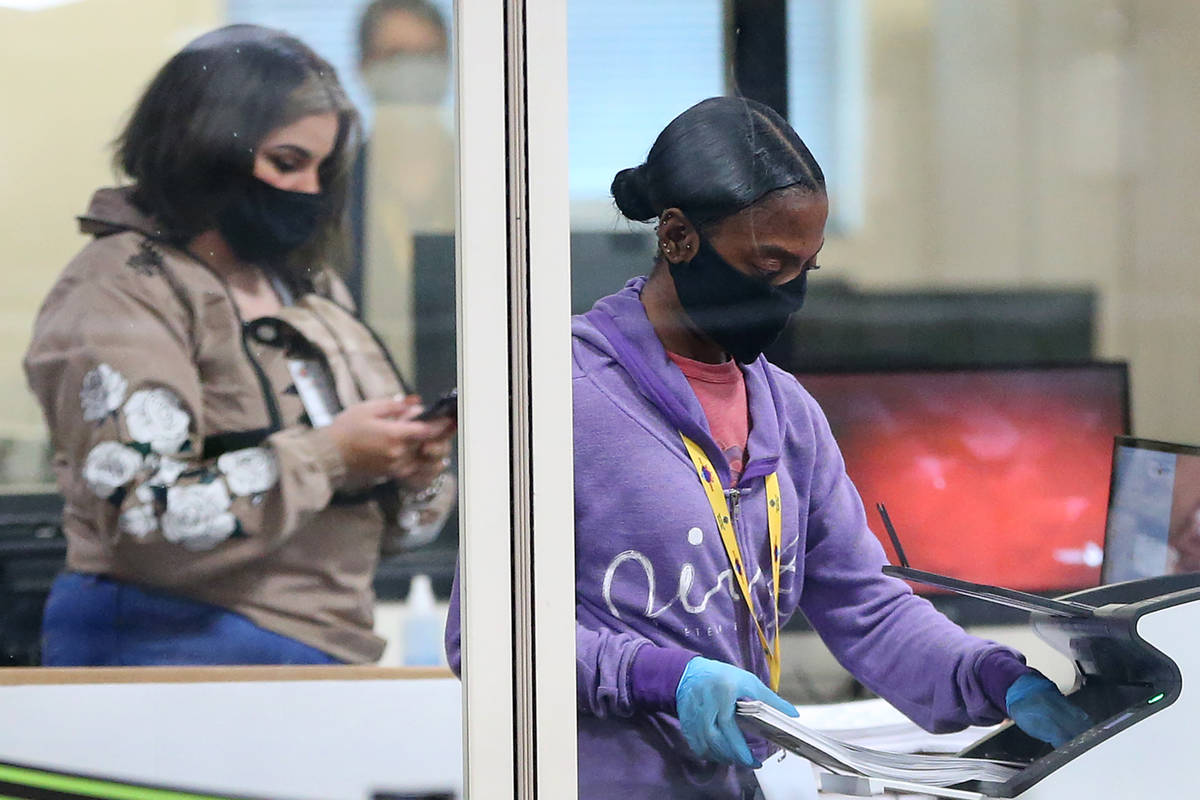How are Nevada ballots counted and verified?

Nearly 600,000 of Nevada’s general election votes have been cast by mail in this election — about half of all reported votes. That’s more mail ballots than have ever been cast in any previous election in the state.
Elections experts have said mail-in ballots are safe, and Nevada’s Republican Secretary of State Barbara Cegavske testified this year that her office did not find any fraud during the state’s primary election, which was conducted almost entirely by mail.
Under Assembly Bill 4, passed during a special session of the Legislature in August, all active registered voters in Nevada were sent a mail ballot.
Here are details of the ballot counting and verification process, according to information provided by the Nevada secretary of state’s office.
Who counts ballots?
Ballots in Nevada are counted by local elections officials, the county clerk or the county registrar of voters and their staffs. Statewide, voter registrations are overseen by Secretary of State Barbara Cegavske, who works with local officials to ensure elections are conducted properly. Under state law, observers are allowed to watch the counting process, and have done so in this election.
The technology used
All mail ballots in Clark County were counted first by running them through a digital scanner. If the scanner cannot read the ballot or determine the voter’s intent, the ballot is sent to an adjudication or duplication team, both of which are overseen by a bipartisan election board. County elections officials have said about 70 percent of ballots are sent to be reviewed by elections officials.
Related: Biden has widened lead over Trump in Nevada
All voting equipment used in the state, including mail ballot scanners, has to meet or exceed the federal voting system standards. It also must be independently tested to determine it functions correctly. Independent testing is performed by the Nevada Gaming Control Board.
Clark County uses the Agilis ballot counting technology.
When will ballot counting end?
All mail ballots had to be postmarked by Nov. 3 or dropped off at a ballot drop-off location by 7 p.m. on Election Day in order to be counted. Counties have until seven days (Nov. 10) after the election to receive ballots in the mail, but only ballots postmarked on or before Election Day will be counted.
Ballots received by the county in the mail without a postmark, or with an illegible postmark, will be considered mailed by Election Day, but only if they were received by Nov. 6. The deadline for counting all ballots is Nov. 12. After that, the final canvass of the vote will happen on Nov. 16 when state officials review the results.
How ballots are verified
Ballot envelopes are individually bar coded to specific voters and printed on special paper that makes them impossible to counterfeit easily. Officials verify signatures on the outside of ballot envelopes and set aside those that don’t match for further investigation. An electronic system also prevents people from casting more than one vote.
All mail ballots had to be returned in an authorized ballot return envelope, which had to be signed by the voter. That signature is compared to the signature on file at the election office. If the signature does not match, the ballot is rejected.
Signature verification is performed on every ballot received. If the signature is missing or if the signature on the ballot return envelope does not match the signature on file for the voter, the ballot will not be counted until the voter verifies their signature, a process known as “curing.”
According to figures posted by the secretary of state, more than 8,000 ballots thus far required a signature to be cured.
How ballot curing happens
Ballots with signature problems can’t be validated until going through the signature cure process.
Election officials will try to contact the voter using the information that’s on file with the county. Those efforts will be made by mail, but could also include a telephone call or an email if a voter has provided that information to the county.
The deadline to cure a missing or mismatched signature is Nov. 12.
When is the election count official?
Results are unofficial until each county certifies the results, which can take up to 13 days after the election.
How to check the status of a ballot
Go to the secretary of state’s website or the Clark County elections department website and check a voter’s history. (After casting a mail or in-person ballot, the voter history will record that a person voted in the 2020 general election.)
Some voters may see a status that says “mail ballot received” rather than “mail ballot counted” when they log in to check their status. According to the secretary of state’s office, that’s not a cause for concern; it simply means that the ballot counted status hasn’t yet been applied, even though most ballots have already been tabulated.
Where can I find out more about election security?
The secretary of state’s office has posted a “myths versus facts” document on its website to address some of the common concerns about voter fraud.
More information
More questions and answers about voting in Nevada can be found on the secretary of state’s website or on the website of the Clark County elections department.
Review-Journal Politics & Government Editor Steve Sebelius contributed to this story.
A previous version of this story listed an incorrect ballot counting deadline. The deadline is Nov. 12.